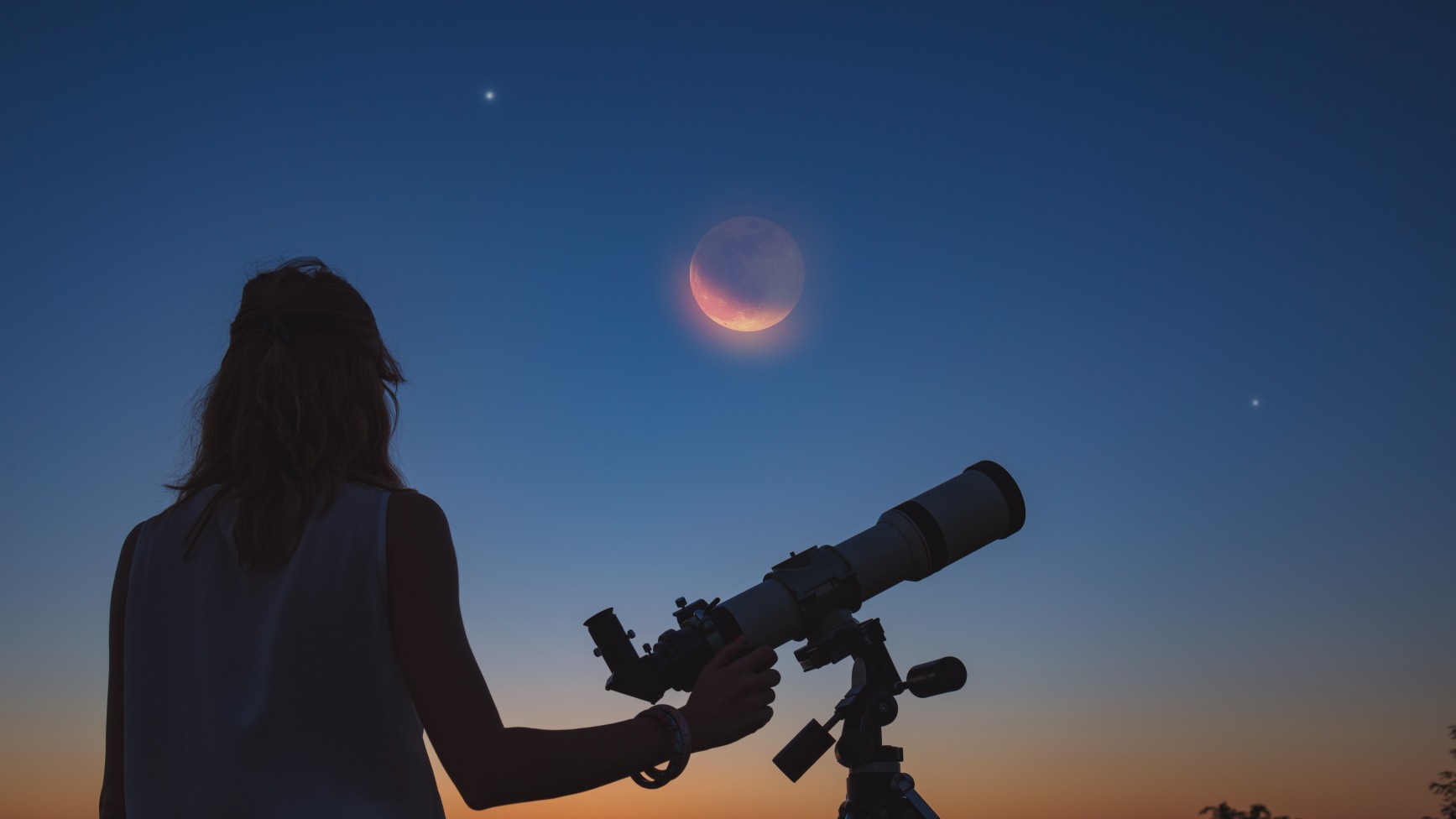
The summer solstice on June 21 may be an important annual observance on Earth, but aside from the sun being its highest in the sky in the Northern Hemisphere, it's not typically a stargazing event. That changes in 2023 with the appearance in the solstice's evening twilight of Venus, Mars and a slim crescent moon in the western sky.
The three celestial bodies won't appear this close together again to observers in North and South America until March 28, 2028, according to When The Curves Line Up. With alignments also appearing on the evenings before and after the solstice, it's a great week to be outside in twilight, with the added bonus of Da Vinci glow — or Earthshine, sunlight reflected by the Earth onto the dark lunar surface — visible on the waxing crescent moon.
Related: Summer solstice: The science behind the longest day of the year
If you want to look for the slimmest crescent moon possible then use stargazing binoculars to find it in twilight low on the western horizon on Monday, June 19. It will be just over 3% illuminated, so may be difficult to spot in the bright post-sunset sky.
The following evening, Tuesday, June 20, will see a slightly brighter and higher crescent moon form a line in the sky with bright Venus and dim Mars. The moon will be almost 8% illuminated and will display vivid Da Vinci glow on its darkened limb.
Perhaps the best view of the three bodies comes on Wednesday, June 21 during the first twilight following the start of the summer solstice, according to Timeanddate.com. The start of astronomical summer in the Northern Hemisphere will be marked by a right-angle triangle of Mars, Venus and a 13% illuminated crescent moon, though dim mars may be hard to spot without binoculars or a good small telescope. Look out for Da Vinci glow on the moon once again.
The final sight of the week occurs the following evening when, on Thursday, June 22, a 21% illuminated crescent moon will align once again with Mars and Venus, but this time from above the pair. The moon will also be close to Regulus in the constellation Leo.
All of these sights can be seen with the naked eye, but for a spectacular close-up of Da Vinci glow on the lunar surface a pair of stargazing binoculars or a telescope will help.







